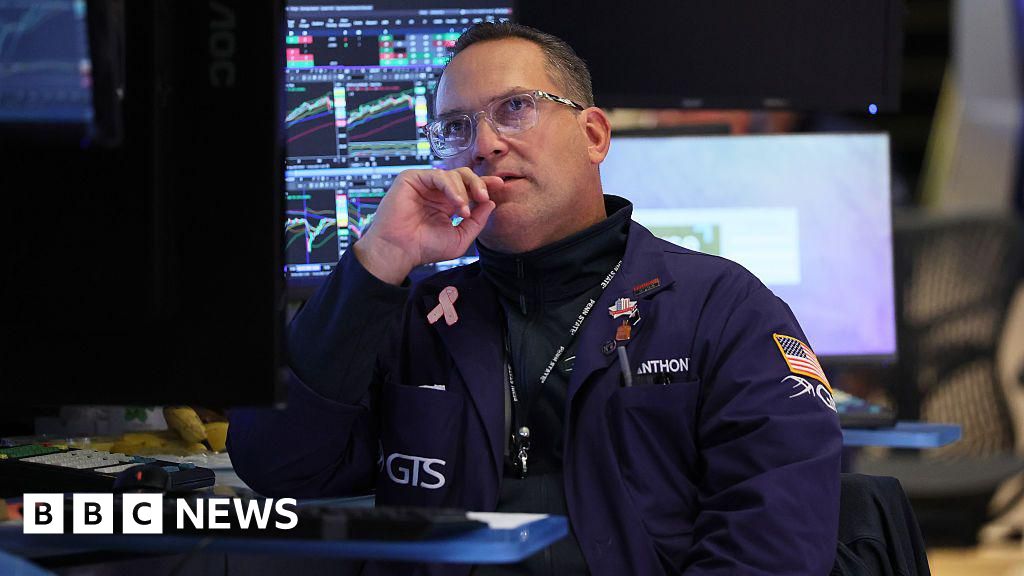For Rick Rieder, the stock market has never looked so good.
The chief investment officer of global fixed income at BlackRock says he thinks the market has emerged into the “best investing environment ever,” thanks to a cluster of factors that are setting up a bullish backdrop for equities.
Rieder’s ultra-bullish view isn’t shared by all. Concerns about the US economy and the impact of tariffs have caused the percentage of investors who said they were bearish on stocks over the next six months to rise to 43% in the last week, according to the latest AAII Investor Sentiment survey.
But for Rieder, who manages $2.4 trillion of client money, the setup right now is ideal.
“It doesn’t mean necessarily that everything’s going up, but there’s a couple of things at play that are pretty extraordinary,” Rieder told CNBC on Wednesday.
Here’s what’s driving his optimism.
Stock market technicals
Mario Tama/Getty Images
The technical backdrop for equities is highly favorable.
Investors have around $7 trillion of cash sidelined in money market fund, which some have said could fuel fresh gains for stocks as rates come down in the coming months and that money is deployed into equities.
Corporate stock buybacks are also at record highs. That’s setting up an excellent supply-demand picture for the market, Rieder said.
“Technicals in equities are crazy,” Rieder said. “The demand versus supply is pretty extraordinary. “
Earnings growth
Corporate earnings are still holding up despite pressure from tariffs. Of the the S&P 500 companies that have reported results for the second quarter, 81% have beaten earnings estimates, above the 10-year average, according to the latest update from FactSet.
If that proportion of earnings beats holds, it will mark the best earnings season for the benchmark index since 2023, BlackRock said in a recent note.
Earnings strength also applies to some of the market’s most popular stocks. If you exclude Tesla from the Magnificent Seven, earnings growth among the group of tech stalwarts is growing at a pace of around 54% year-over-year, Rieder said. At that rate, Rieder said Big Tech stocks’ high valuations aren’t greatly concerning.
Fed rate cuts
Chip Somodevilla/Getty Images
The Fed has room to start cutting interest rates again in September, and potentially more aggressively than markets expect, Rieder said, pointing to two catalysts in particular:
- Slack in the job market. The economy added way fewer jobs than anticipated in July. Job gains for the months of May and June were also heavily revised downward, indicating that the labor market was much weaker than initially thought.
- Good inflation numbers. The July inflation report was in-line with economists’ expectations. There’s some pick-up stemming from President Donald Trump’s tariffs, but price growth overall remains low, Rieder says.
Rieder said he believed it was “a given” that the Fed would issue its next rate cut in September. He also speculated that the central bank had room to lower interest rates a full percentage point from the current levels, which would imply the Fed funds rate target range falling to its lowest level in about three years.
Productivity growth
Productivity growth could also rise, Rieder said, pointing to advancements in tech, space, data, and spending on AI in particular.
“All of these are geared towards higher productivity, operating at a lower cost basis. That’s where we’re going,” Rieder said of recent tech trends.
Higher productivity implies steeper economic growth overall, though labor productivity among all workers actually declined over the last year. The total output among all nonfarm workers dropped to around 1.3% year-over-year growth in the second quarter, according to the Bureau of Labor Statistics.
“I’m sanguine on the economy. I think we’re moving generally in the right direction,” Rieder later added.



